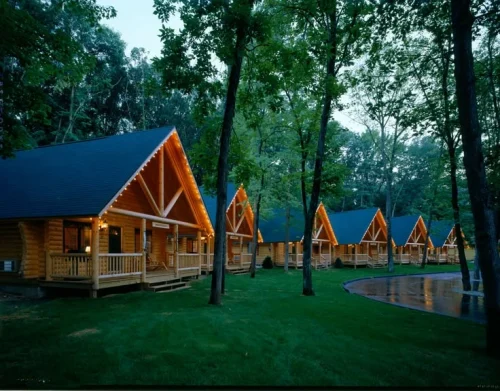
The Perfect Cupboard Designs for Crockery for a Polished Home Look
May 15, 2025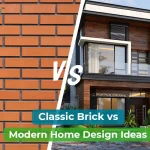
Classic Brick vs. Modern Glass: How Generational Tastes Shape Building Design Trends
May 15, 2025
Sustainable architecture is transforming the ideology of buildings and homes. Have you ever wondered how homes are designed in a modern, as well as environmentally friendly way? As the population is increasing continuously, we need to think about how to build homes without affecting nature. Sustainable architecture mainly concentrates on building homes by keeping the future in mind. Let’s explore the importance of sustainable architecture for Earth, its principles, and design ideas to inspire and create awareness among people.
Table of contents
- What is Sustainable Architecture?
- Why is Sustainable Architecture important?
- Principles of Sustainable Architecture
- Top 10 Sustainable Architecture Design Ideas
- 1. Bamboo-Based Eco-Home
- 2. Recycled Steel Urban Home
- 3. Rammed Earth Retreat
- 4. Reclaimed Wood Cabin
- 5. Passive Ventilated Home with Open Rainscreen
- 6. Nature-Integrated Eco Villa
- 7. Community-Focused Eco-Homes
- 8. Renewable Energy Home with Hydraulic Integration
- 9. Rooftop Living and Green Terraces
- 10. Multi-Use Tiny Home
- Final Thoughts
- GreenFortune: Premium uPVC Windows and Doors for Modern Living
- FAQs
What is Sustainable Architecture?
Sustainable Architecture is also known as green or environmental architecture, which aims to create buildings and homes by being responsible for protecting the environment. It combines reducing the use of water, energy, and negative impact on nature, even in building construction, design, renovation, or demolition. It focuses on creating a sustainable home with eco-friendly materials.
Also Read: Latest Curtain Design Ideas to Elevate Your Home: Beautiful Curtain Design for Every Room
Why is Sustainable Architecture important?
Sustainable Architecture is important in addressing these environmental challenges while offering long-term benefits for homeowners and society. Some of the advantages of sustainable architecture are given below.
- Reduces Greenhouse Gas Emissions and Environmental Impact
- Conserves resources and reduces waste
- Lowers Energy Cost
- Improves Health and Comfort
- Adapts to Climate Change
- Increases Property Value
Principles of Sustainable Architecture
The major objective of sustainable architecture is to be kind to the environment. It focuses on designing buildings that are smart with resources and built to last. Here are the key principles and components of the sustainable architecture approach:
Use of Renewable Energy
Sustainable architecture sticks on utilizing clean energy sources like solar power and geothermal heating. These systems reduce reliance on fossil fuels and help to decrease greenhouse gas emissions.
Efficient Resource Use
Each resource has to be used wisely. It includes choosing recycled or locally sourced materials, reducing waste wherever possible, consuming less energy, and picking eco-friendly building materials, etc.
Also Read: 2025 Stunning False Ceiling Colour Design to Transform Your Home
Passive Design
Sustainable architecture is designed to work without depleting nature. Instead of relying heavily on artificial lighting or air conditioning, we can construct in such a way that allows natural lighting. The ventilation and sunlight can be achieved by properly positioning windows and walls.
Durable and Low-Impact Materials
It is important to choose every material in a building as it can affect the environment. Sustainable architecture minimizes this impact by using long-lasting and low-maintenance materials. Choose the right materials that can be recycled or reused.
Build Less, Build Better
Every square foot of land creates an environmental impact. Sustainable architecture encourages smarter, simpler and modern home designs without unnecessary fittings. A green home should be easier to build, affordable to maintain, and better for the future.
Design for Longevity
Sustainable architecture should withstand all the weather, natural circumstances, and time. We can avoid frequent repairs and replacements by using high-quality materials. It will reduce the environmental impact while increasing comfort, elegance, and durability.
Also Read: 20+ Wood Door Design For Room You’ll Want to Save Right Now
Top 10 Sustainable Architecture Design Ideas
Sustainable architecture not just involves using eco-friendly materials for building your home, but also includes smart design, minimal environmental impact, and maximizing energy efficiency. The top 10 sustainable architecture design ideas for future-ready living spaces are given below.
1. Bamboo-Based Eco-Home
This home uses bamboo as it is a fast-growing, carbon-absorbing material, strong, and flexible. It is designed for homes with a tropical modern aesthetic, and that welcomes natural ventilation with wide verandas, open floor plans, and large louvered windows. Bamboo is used for walls, ceilings, floors, and even decorative elements. To boost energy efficiency, add a green roof and solar panels.
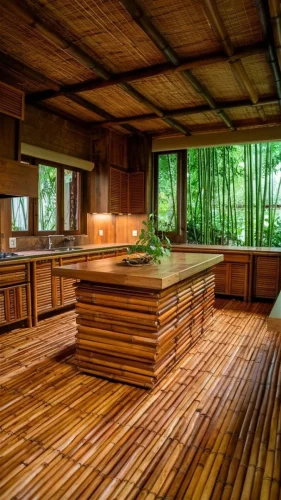
2. Recycled Steel Urban Home
This home uses recycled steel as it is durable, versatile, and endlessly reusable. It is designed with a modern open-concept layout with high ceilings and sleek steel beams. The steel framework blends with reclaimed wood interiors and polished concrete flooring for an eco-friendly touch. Solar panels and rainwater harvesting make the home energy-efficient, while a rooftop garden adds insulation.
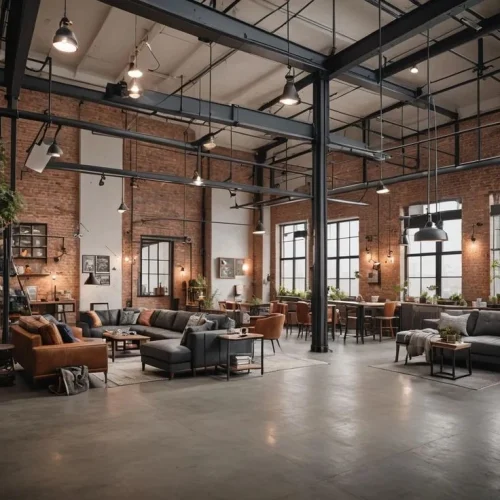
3. Rammed Earth Retreat
This home uses rammed earth, as it offers exceptional insulation and temperature regulation. Constructing the home partially underground or nestled into a hillside helps to reduce temperature swings and blend with the terrain. Adding clerestory windows for daylight to get rid of heat gain. Open rainscreen systems help to control moisture and air ventilation.
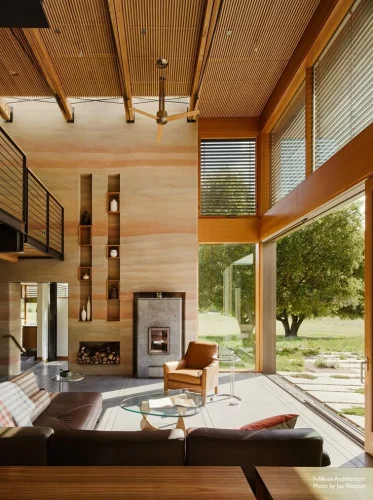
Also Read: https://thegreenfortune.com/led-strip-design/
4. Reclaimed Wood Cabin
This cozy cabin uses reclaimed wood from barns and factories for its floors, beams, and ceilings to reduce waste. The exterior features like Kebony wood siding, known for its durability and low maintenance. It can be designed to include a highly insulated envelope, rooftop terraces, and wood or pellet stoves for low-carbon heating.
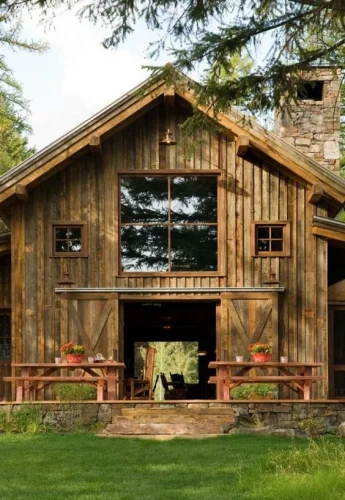
5. Passive Ventilated Home with Open Rainscreen
This design uses Kebony wood for an open rainscreen facade. The structure encourages cross ventilation, improving insulation and eliminating mold buildup. It consists of thermal mass and operable shading systems that reduce dependence on mechanical cooling. It is a healthy and efficient environment design for homes and a library.

6. Nature-Integrated Eco Villa
This home uses Kebony wood, natural stone, and clay tiles. It is designed to blend into its surrounding hills or wooded areas. Its form and materials are inspired by nature and sourced locally to minimize environmental impact. Shaded decks, large overhangs, and native plants ensure minimal disruption to the local ecosystem. It creates a peaceful, low-gas-emission home.
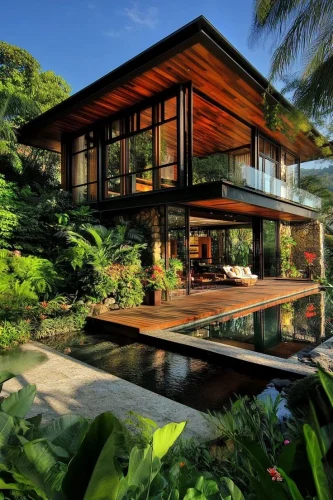
7. Community-Focused Eco-Homes
These homes use locally sourced modified wood to create a cohousing model that shares amenities like gardens, play areas, and recreational spaces. The design encourages social sustainability. Raised wooden decks and shared energy systems, such as solar microgrids or composting stations, cultivate connection and efficient living in a small community setup.
8. Renewable Energy Home with Hydraulic Integration
This futuristic home uses a mix of Kebony wood, steel, and smart glass to create a sleek, energy-independent structure. It can generate energy if built near a stream, or it can run on solar-panel systems. A solar-topped greenhouse, battery storage, and greywater reuse complete the closed-loop energy system. The design maximizes natural light while staying environmentally self-sufficient.
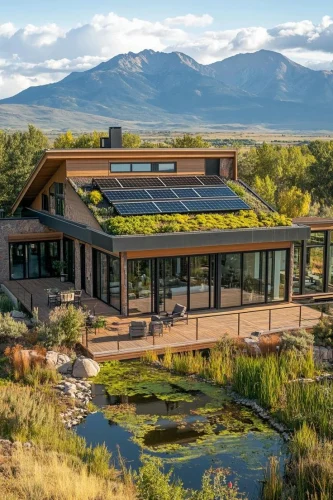
9. Rooftop Living and Green Terraces
This concept uses reinforced concrete, reclaimed steel, and lightweight soil to create livable, green spaces. It is made by transforming unused city rooftops. Green terraces help reduce the urban heat and offer space for relaxation or gardening. Planter boxes, pergolas, and sustainable waterproof membranes make this urban solution functional and environmentally beneficial.
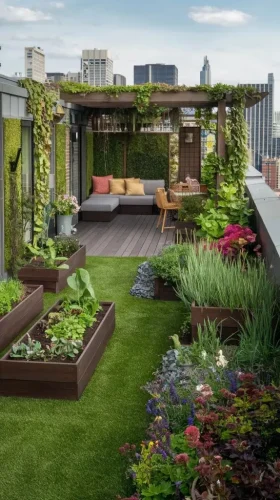
Also Read: https://thegreenfortune.com/low-cost-home-design/
10. Multi-Use Tiny Home
This home uses structural insulated panels, sustainable wood, and smart glass. This tiny home is just 300–500 sq ft, which includes foldable furniture, passive solar orientation, and efficient water systems like greywater recycling. It is designed as a “small space, big idea home” that offers a smart, small-space solution that prioritizes sustainability without sacrificing functionality.
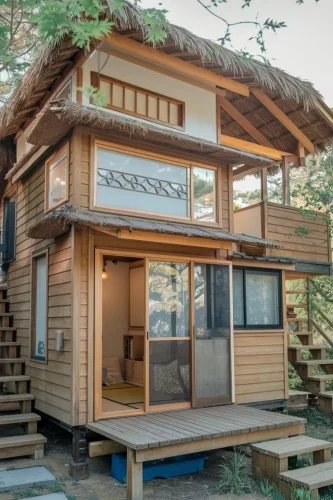
Final Thoughts
Sustainable Architecture incorporates landscaping into buildings, and creates pristine appeal as well as contributes to our well-being. As climate change and environmental concerns are growing, the way we design and construct our homes must evolve in a way to protect the environment. We must support green building practices and contribute to a more sustainable world. Get inspired with these sustainable architecture design ideas to build your dream home.
GreenFortune: Premium uPVC Windows and Doors for Modern Living
At GreenFortune, we redefine the way your home looks and feels. Our expertly crafted uPVC doors and windows are designed to deliver superior performance, long-lasting durability, and sleek, modern design. We blend cutting-edge technology with sustainable materials to ensure comfort, security, and energy efficiency.
Step into a world of smarter, stronger, and more stylish living. Explore the GreenFortune collection today and upgrade your home with confidence!
FAQs
1. Can sustainable homes be affordable?
Yes. Some eco-friendly materials may have higher upfront costs, but they often save money over time through lower utility bills, minimal repairs, and longer-lasting structures.
2. Do sustainable architecture designs require special maintenance?
Not necessarily. Many eco-friendly materials are low-maintenance and highly durable. It requires fewer repairs and replacements over time.
3. How is sustainable architecture different from traditional architecture?
Sustainable architecture focuses on environmental responsibility, energy efficiency, and long-term sustainability, while traditional architecture often prioritizes aesthetics and function without considering ecological impact.
4. Are eco-friendly buildings suitable for all climates?
Yes, sustainable design can be adapted to any climate by choosing region-specific materials, insulation methods, and passive design strategies.
5. How do eco-friendly homes impact my lifestyle?
Living in a sustainable home can improve your health and well-being, lower your utility bills, and benefit future generations.

